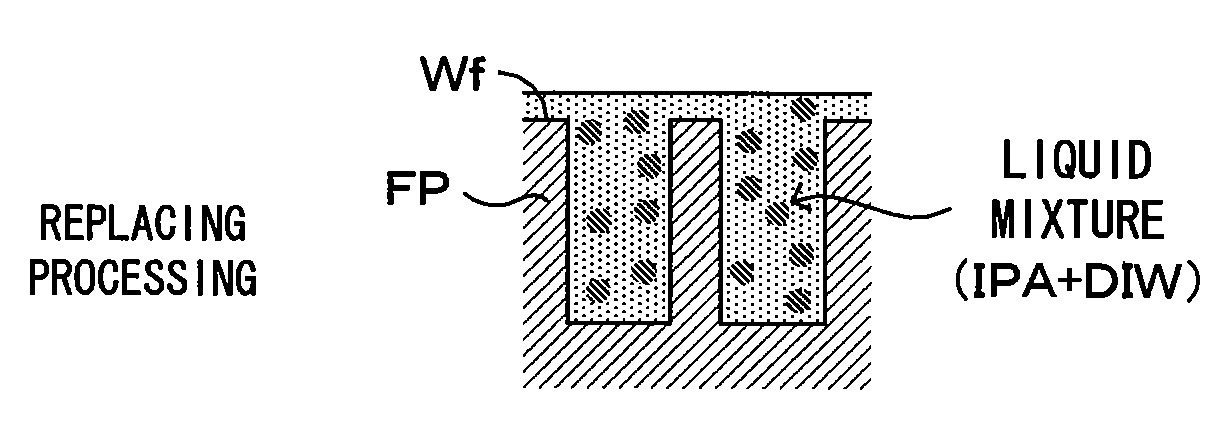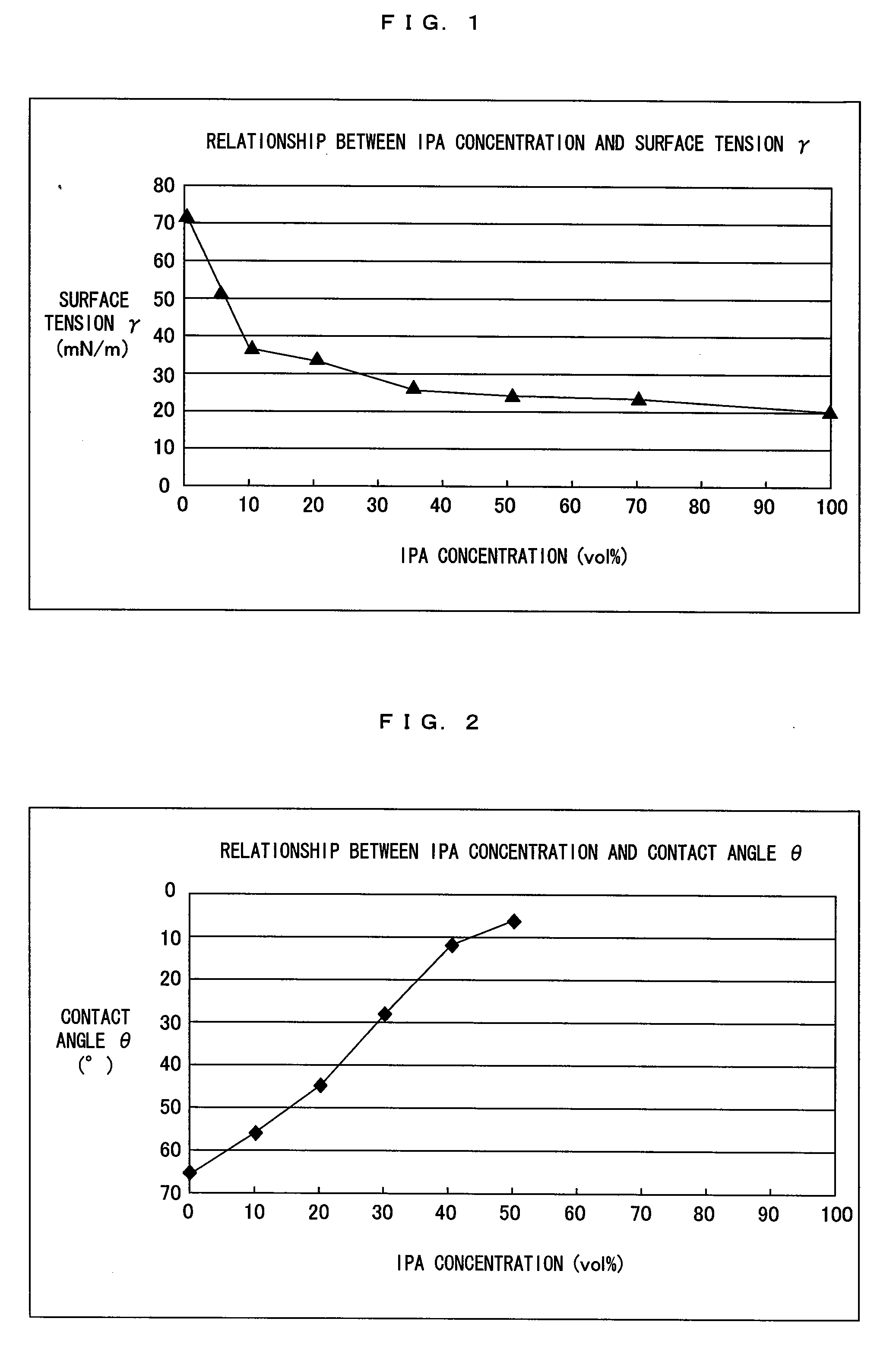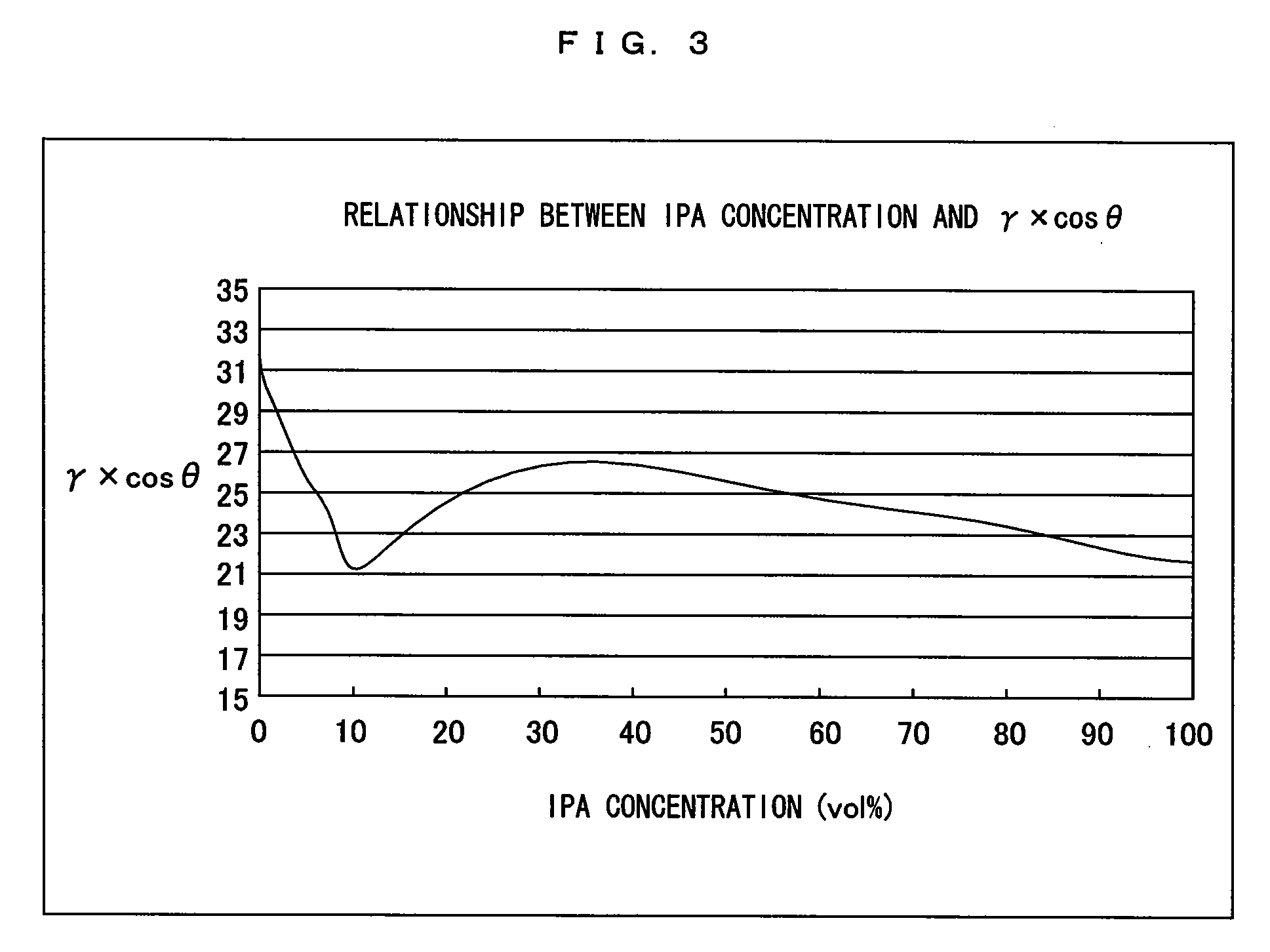Substrate processing method and substrate processing apparatus
a substrate processing and substrate technology, applied in the direction of cleaning processes and apparatus, chemistry apparatus and processes, cleaning using liquids, etc., can solve the problems of micro patterns pulling each other, collapse, and not being able to dissolve ipa in deionized water sufficiently, so as to prevent the destruction of the patterns and facilitate the drying of the surface
- Summary
- Abstract
- Description
- Claims
- Application Information
AI Technical Summary
Benefits of technology
Problems solved by technology
Method used
Image
Examples
first embodiment
[0049]FIG. 4 is a diagram showing a first embodiment of a substrate processing apparatus according to the invention. FIG. 5 is a block diagram which shows a control configuration of the substrate processing apparatus which is shown in FIG. 4. This substrate processing apparatus is a substrate processing apparatus of the single wafer type which is used in cleaning processing which is for removing contaminants adhering to a surface Wf of a substrate W such as a semiconductor wafer. To be more exact, this is an apparatus in which after chemical processing with a chemical solution of a hydrofluoric acid or the like and rinsing processing with a rinsing liquid such as DIW of the surface Wf of the substrate W of which micro patterns of poly-Si are formed on the surface Wf, the substrate W wet with the rinsing liquid is subjected to replacing processing which will be described later, and the substrate W is dried.
[0050]This substrate processing apparatus comprises a spin chuck 1 which holds...
second embodiment
[0087]FIG. 10 is a diagram showing a second embodiment of a substrate processing apparatus according to the invention.
[0088]FIG. 11 is a block diagram which shows a control configuration of the substrate processing apparatus which is shown in FIG. 10. A major difference of the substrate processing apparatus according to the second embodiment from that according to the first embodiment is that a blocking member 9 functioning as the “atmosphere blocker” of the invention is disposed at a position above the spin chuck 1. The other structures and operations are similar to those according to the first embodiment, and therefore, will merely be denoted at the same reference symbols but will not be described.
[0089]The blocking member 9 is a disk-shaped member which has an opening in its central section and disposed at a position above the spin chuck 1. A lower surface (bottom surface) of the blocking member 9 is an opposed surface which is opposed and approximately parallel to the substrate ...
third embodiment
[0097]FIGS. 12A, 12B, and 12C are diagrams showing a third embodiment of a substrate processing apparatus according to the invention. A major difference of the substrate processing apparatus according to the third embodiment from that according to the first and second embodiments is that a pre-drying step is executed after the replacing step but before the drying step. The other structures and operations are similar to those according to the second embodiment, and therefore, will merely be denoted at the same reference symbols but will not be described.
[0098]In this embodiment, the following pre-drying step is executed after replacement with the liquid mixture (replacing step) but before drying of the substrate W (drying step). First, the liquid mixture is supplied to the substrate surface Wf, and a puddle-like liquid mixture layer 21 is formed all over the substrate surface (FIG. 12A). Following this, a gas discharge nozzle 8 blows a nitrogen gas toward a central section of the sur...
PUM
 Login to View More
Login to View More Abstract
Description
Claims
Application Information
 Login to View More
Login to View More - R&D
- Intellectual Property
- Life Sciences
- Materials
- Tech Scout
- Unparalleled Data Quality
- Higher Quality Content
- 60% Fewer Hallucinations
Browse by: Latest US Patents, China's latest patents, Technical Efficacy Thesaurus, Application Domain, Technology Topic, Popular Technical Reports.
© 2025 PatSnap. All rights reserved.Legal|Privacy policy|Modern Slavery Act Transparency Statement|Sitemap|About US| Contact US: help@patsnap.com



